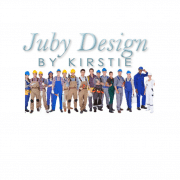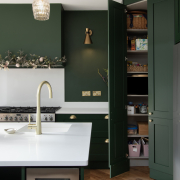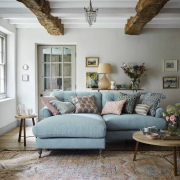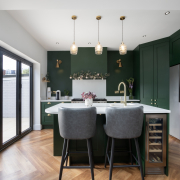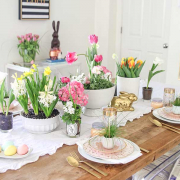“Choosing the Perfect Kitchen Work Surface”: Expert Advice from Kirstie from Juby Interior Design.
/0 Comments/in April News, Kirstie our Interior Designer., Kitchen Design and Planning /by Kirstie OgborneAre you looking to elevate your kitchen with a stunning new work surface? As an experienced interior designer specialising in kitchen renovations, I understand the importance of selecting the right materials to enhance both the aesthetic and functionality of your space. Let me guide you through the decision-making process to ensure you choose the perfect work surface for your kitchen.
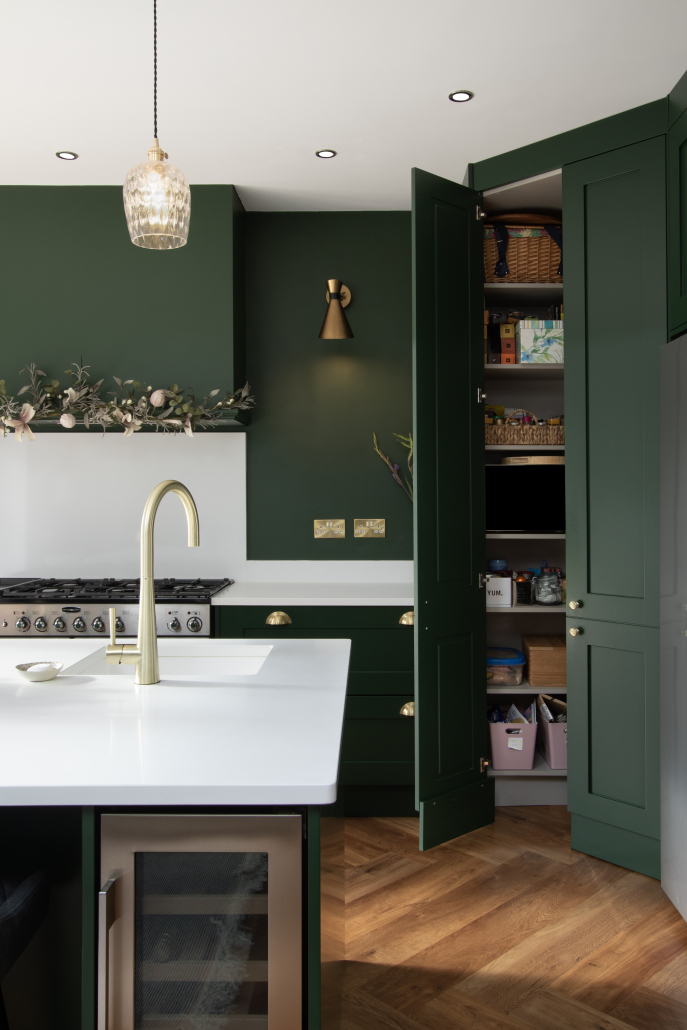
Key Considerations.
Style and Aesthetics: Your kitchen work surface should complement the overall design theme of your space. Whether you prefer a sleek and modern look or a more rustic and cosy feel, I’ll help you find the perfect material and finish to achieve your desired aesthetic.
Durability and Maintenance: A durable work surface is essential for withstanding the rigors of daily use in the kitchen. I’ll recommend materials that are not only visually appealing but also easy to clean and maintain, ensuring your investment stands the test of time.
Functionality and Practicality: Beyond looks, your work surface should be highly functional and cater to your specific cooking needs. Whether you require heat resistance for hot pots and pans, stain resistance for easy cleanup, or ample workspace for food prep, I’ll help you prioritise functionality without compromising on style.
Budget and Cost: I understand that budget is a significant factor in any home renovation project. I’ll work with you to find cost-effective solutions that meet your design goals without breaking the bank, offering a range of options to suit your budgetary constraints.
Popular Work Surface Options.
Quartz: Known for its durability and low maintenance, quartz offers a wide range of colours and patterns to suit any kitchen design.
Granite: A timeless choice beloved for its natural beauty and durability, granite adds elegance and sophistication to any kitchen.
Solid Surface: Versatile and customisable, solid surface materials like Corian offer seamless integration and easy maintenance.
Butcher Block: Warm and inviting, butcher block countertops add a touch of rustic charm and are perfect for food preparation areas.
Expert Guidance Every Step of the Way.
With my expertise as your guide, choosing the right work surface for your kitchen is a breeze. From initial design consultations to final installation, I’ll be with you every step of the way to ensure your vision comes to life.
Ready to transform your kitchen with a stunning new work surface? Contact me today to schedule a consultation and let’s create the kitchen of your dreams together. With my kitchen partners at Number Eighty One we’ll collaborate to seamlessly integrate your chosen work surface into the overall design, ensuring a cohesive and stylish look that transforms your kitchen into the heart of your home.
Your Ultimate Guide to Sofa Shopping: Key Considerations for Finding the Perfect Piece.
/0 Comments/in April News /by Kirstie OgborneEmbarking on the journey of sofa shopping can be both exciting and overwhelming. After all, your sofa is not just a piece of furniture; it’s a central element of your home’s decor and a hub for relaxation and socialising. With countless options available, it’s essential to navigate through the process with clarity and consideration. In this comprehensive guide, we’ll delve into the essential factors to consider when selecting the perfect sofa for your space.
Size Optimization:
When it comes to choosing a sofa, size matters significantly. Before making a purchase, it’s crucial to assess the dimensions of your space meticulously. Measure the available floor area, taking into account any architectural features or obstacles such as doorways, hallways, and stairwells. This ensures that your sofa fits seamlessly into your home without compromising on comfort or accessibility. Additionally, consider the placement of the sofa within the room to ensure it doesn’t obstruct traffic flow or impede the functionality of other furniture pieces.
Style Selection:
The style of your sofa sets the tone for the entire room, making it essential to choose a design that complements your aesthetic preferences and existing decor. From classic to contemporary, there are numerous styles to choose from, each with its unique characteristics. Consider factors such as the shape of the arms, the presence of tufting or embellishments, and the overall silhouette of the piece. Whether you prefer the timeless elegance of a Chesterfield sofa or the sleek lines of a mid-century modern design, select a style that reflects your personality and enhances the ambiance of your space.
Material Matters:
The upholstery material of your sofa not only affects its aesthetic appeal but also its durability and maintenance requirements. When selecting a fabric, consider your lifestyle and the intended use of the sofa. Performance fabrics such as leather, microfiber, and velvet are ideal for high-traffic areas and households with children or pets, as they offer easy cleanup and durability against stains and wear. Alternatively, natural fabrics like cotton and wool provide a luxurious feel and are well-suited for low-traffic areas or well-ventilated rooms. Take into account factors such as comfort, durability, and ease of maintenance when choosing the upholstery material that best suits your needs.
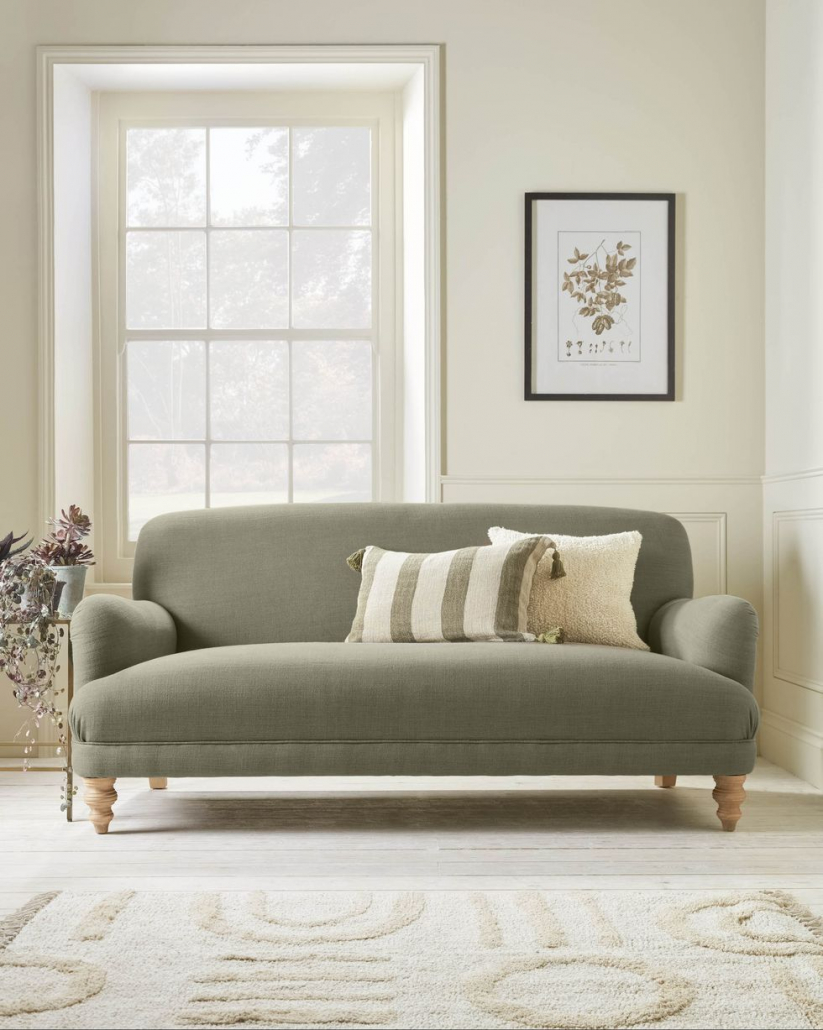
Colour Coordination:
The colour of your sofa plays a significant role in defining the overall aesthetic of your space. While neutral hues such as beige, grey, and taupe offer timeless elegance and versatility, bold colours or patterns can make a striking statement and add personality to your decor. Consider the existing colour palette of your room and choose a sofa colour that complements or contrasts harmoniously with the surrounding elements. Additionally, factor in practical considerations such as the ease of coordinating accessories and the ability to conceal stains or wear over time.
Budget Planning:
Setting a budget is essential when shopping for a sofa, as prices can vary widely depending on factors such as size, style, and upholstery material. Determine your budget range based on your financial considerations and prioritise features or attributes that are most important to you. Research different retailers and compare prices to ensure you’re getting the best value for your money. While it’s tempting to splurge on a high-end sofa, remember to consider long-term durability and quality to make a wise investment that will stand the test of time.
Style Statements:
Choosing a sofa style involves more than just aesthetics; it’s about making a statement that reflects your personal taste and enhances the overall ambiance of your home. Whether you prefer the classic sophistication of a tufted Chesterfield or the sleek minimalism of a modern sectional, select a style that resonates with your lifestyle and complements your existing decor. Pay attention to details such as the shape of the legs, the depth of the seats, and the presence of decorative accents to ensure your sofa makes a lasting impression.
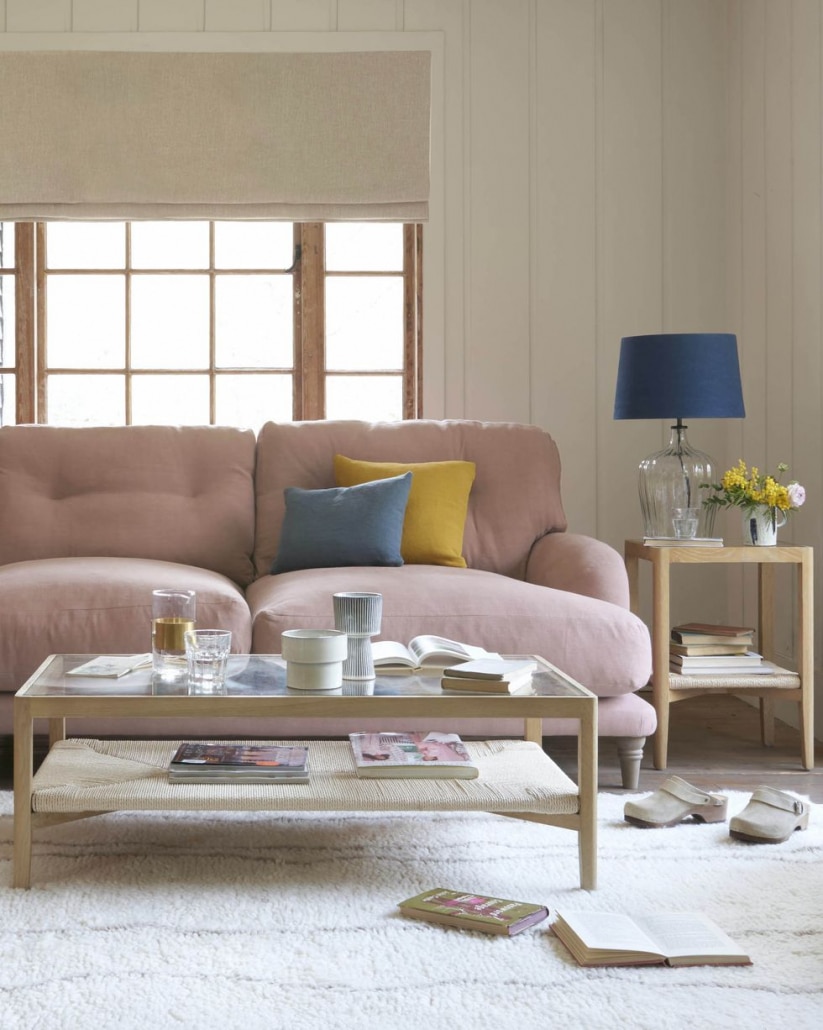
Customer Insights:
Before finalising your purchase, take the time to research customer reviews and testimonials to gain valuable insights into the quality and performance of different sofa models. Look for reviews from verified purchasers and pay attention to feedback regarding comfort, durability, and overall satisfaction. Additionally, seek out recommendations from friends, family, or interior design professionals who have experience with sofa shopping. By leveraging the experiences of others, you can make a more informed decision and choose a sofa that meets your expectations and exceeds your standards.
Conclusion:
Choosing the perfect sofa for your home is a decision that requires careful consideration and attention to detail. By evaluating factors such as size, style, material, colour, budget, and customer insights, you can confidently navigate the sofa shopping process and find a piece that not only enhances your living space but also enriches your daily life. Whether you prefer the timeless elegance of a classic design or the modern sophistication of a contemporary silhouette, let your sofa be a reflection of your unique style and personality. Remember, if you need help or advice, please get in touch—I am always happy to help. Happy sofa shopping!
Illuminate Your Home: The Power of Proper Lighting
/0 Comments/in April News, Lighting /by Kirstie OgborneWelcome to our blog, where we’re shedding light on the transformative effects of good lighting in your home. From creating an inviting ambiance to enhancing functionality, the right lighting can truly make a difference in every room. Join us as we explore the importance of proper lighting and discover how it can elevate your living spaces.
In today’s fast-paced world, our homes have become more than just living spaces – they’re sanctuaries where we seek solace and comfort. And what better way to enhance the atmosphere of your home than with proper lighting? Let’s delve into the various aspects of lighting and how they can transform your space.
Proper lighting isn’t just about brightening up a room; it’s about creating an ambiance that suits your lifestyle and reflects your personality. Whether you’re entertaining guests in the living room or unwinding in the bedroom, the right lighting sets the mood for every occasion.
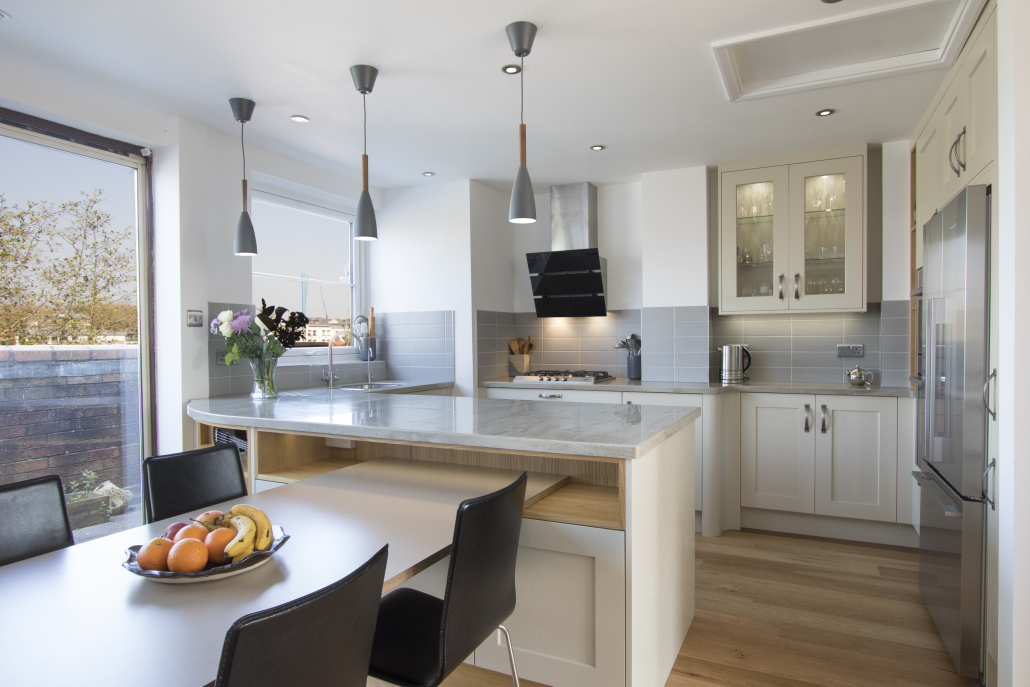
Types of Lighting:
When it comes to lighting, one size doesn’t fit all. That’s why it’s essential to understand the different types of lighting and their roles in your home.
Ambient Lighting:
Ambient lighting serves as the foundation of your lighting scheme, providing overall illumination to a room. Think of it as the base layer that sets the tone for the space. From overhead fixtures to wall sconces, ambient lighting creates a welcoming atmosphere in your home.
Task Lighting:
Task lighting is all about functionality, providing focused illumination for specific activities. Whether you’re reading a book in your cozy reading nook or chopping vegetables in the kitchen, task lighting ensures you have enough light to see clearly and comfortably.
Accent Lighting:
Accent lighting adds drama and dimension to your home, highlighting architectural features, artwork, and decor. Whether it’s a spotlight on your favorite painting or a string of fairy lights adorning your shelves, accent lighting adds visual interest and depth to your space.
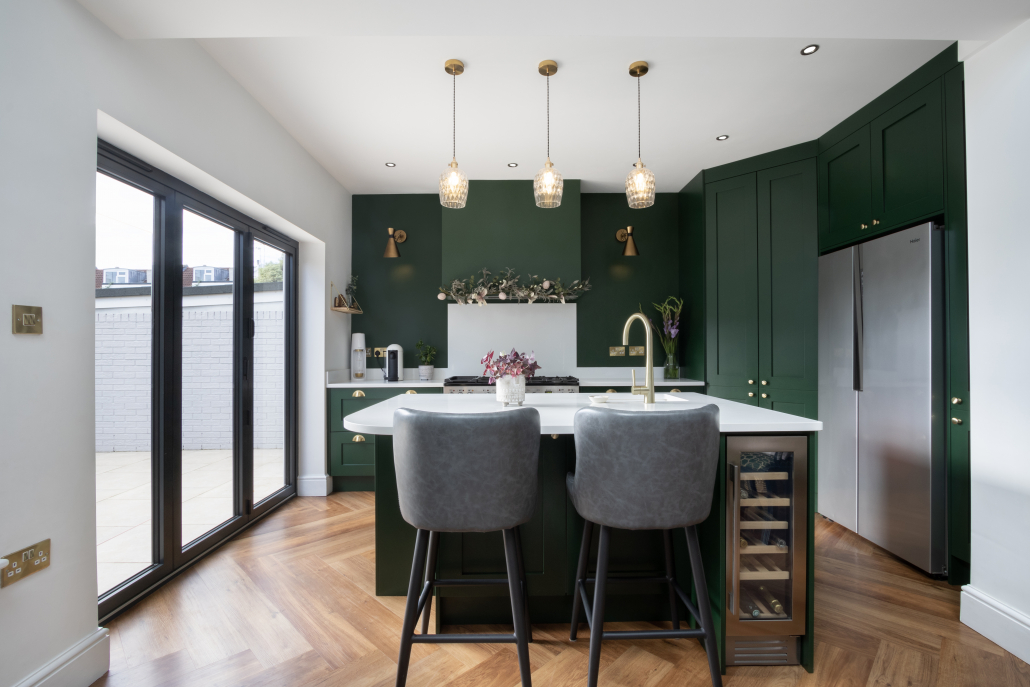
Benefits of Good Lighting:
The benefits of good lighting extend beyond aesthetics. Here are a few reasons why proper lighting is essential for your home:
1.Creates an inviting and comfortable atmosphere.
2.Enhances the functionality of each room.
3.Highlights your home’s best features.
4.Boosts your mood and overall well-being.
5.Improves energy efficiency and reduces eye strain.
6.Pro Tips for Choosing Lighting:
Now that you understand the importance of good lighting let’s discuss some tips for choosing the right fixtures for your home:
Consider the purpose of each room and choose lighting accordingly.
1.Mix and match different types of lighting for a layered effect.
2.Pay attention to the color temperature and brightness of your light bulbs.
3.Don’t forget about the aesthetics – choose fixtures that complement your decor style.
4.Consult with lighting experts for personalised recommendations and advice.
Conclusion:
Good lighting is more than just a practical necessity – it’s an integral part of your home’s design and ambiance. Whether you’re looking to create a cosy retreat or a vibrant entertaining space, the right lighting can make all the difference.
Transform Your Home for a Successful Sale: Expert Interior Design Services.
/0 Comments/in April News /by Kirstie Ogborne
Are you ready to sell your property and make a lasting impression on potential buyers? Look no further! In this blog post, we’ll explore how expert interior design services can transform your home, making it irresistible to buyers and maximising your selling potential.
When it comes to selling your home, presentation is key. A well-designed interior can significantly enhance the appeal of your property, attracting more interest and potentially increasing its value. That’s where professional interior design services come in like me.
At Juby Interior Design by Kirstie, we specialise in transforming homes into stunning spaces that captivate buyers from the moment they step through the door. With years of experience and a keen eye for design, we know exactly how to highlight your home’s best features and create an atmosphere that resonates with potential buyers.
Our process begins with a thorough assessment of your property. We’ll take the time to understand your goals and target market, ensuring that our design approach aligns perfectly with your selling strategy. Whether you’re looking to appeal to young professionals, families, or empty nesters, we’ll tailor our services to meet your specific needs.
Next, we’ll develop a customised design plan that enhances your home’s strengths and addresses any areas that may need improvement. From furniture arrangement to colour selection, we’ll meticulously plan every detail to create a cohesive and inviting environment.
One of the most effective ways to make a positive impression on potential buyers is through staging. Staging involves arranging furniture and decor in a way that highlights your home’s functionality and appeal. By strategically placing key pieces and accessories, we can create a sense of space and flow that makes your home feel welcoming and comfortable.
In addition to staging, we also offer styling services to elevate the overall look and feel of your home. Whether it’s adding decorative accents, updating lighting fixtures, or refreshing paint colours, we’ll incorporate design elements that enhance your home’s aesthetic appeal and create a memorable impression.
But our services go beyond just aesthetics. We understand that selling your home can be a stressful and overwhelming process, which is why we’re here to provide guidance and support every step of the way. From initial consultation to final walkthrough, we’ll be by your side to ensure that your home is presented in its best light and attracts the right buyers.
Now, you may be wondering about the cost of professional interior design services. While it’s true that hiring a designer involves an investment, the return on that investment can be significant. Studies have shown that staged homes typically sell faster and for a higher price than unstaged homes. By investing in expert design services, you’re not only enhancing the appeal of your property but also increasing its market value.
If you’re ready to take your home selling experience to the next level, we invite you to contact us today. Whether you’re preparing to list your property or simply want to explore your options, we’re here to help. Give us a call at 079180179372 to schedule a consultation and learn more about how our interior design services can transform your home.
In conclusion, expert interior design services can play a crucial role in the successful sale of your property. From staging to styling, we’ll work tirelessly to showcase your home in its best light and attract potential buyers. Don’t leave the sale of your home to chance—invest in professional design services and maximise your selling potential today!
Here are a couple of reviews from my clients after I assisted them in preparing their property for sale.
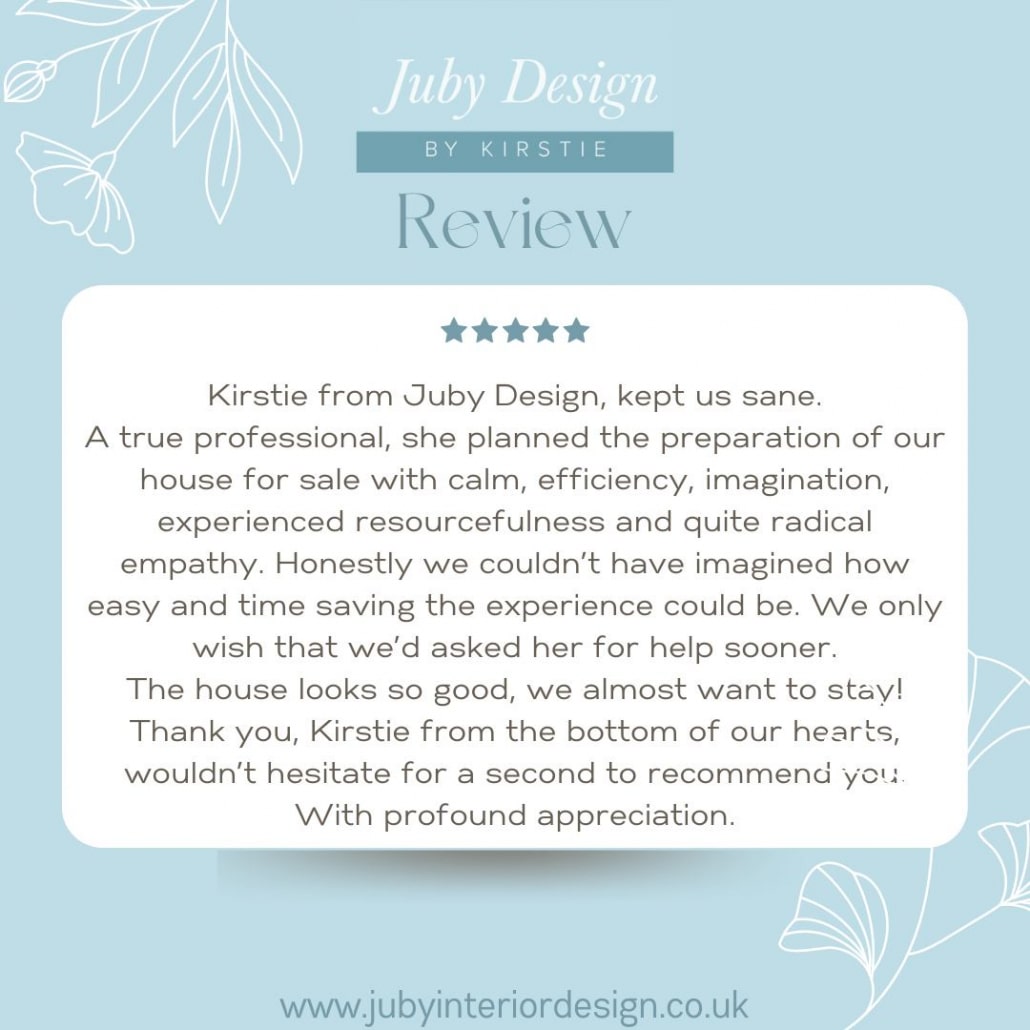
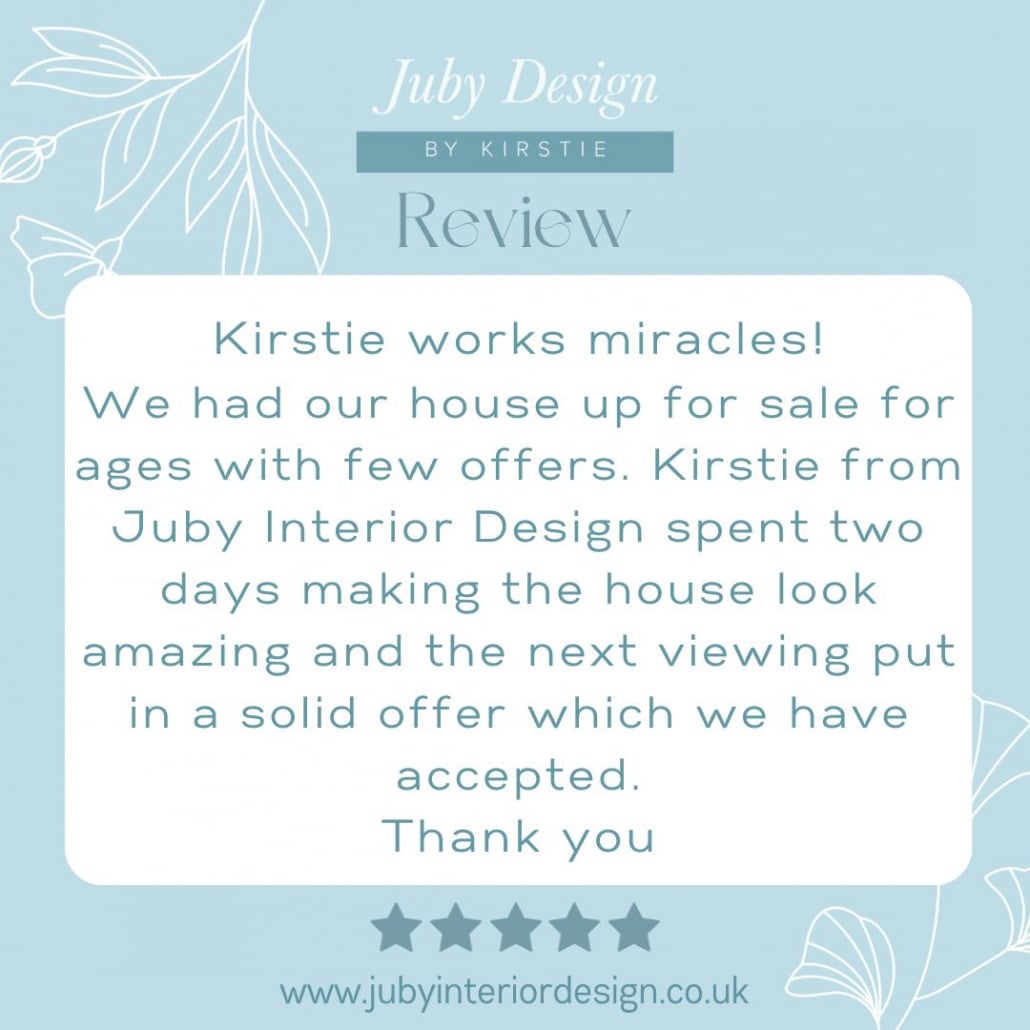
Elevate Your Small Kitchen: Exploring the Best Cabinetry Colours.
/0 Comments/in April News, Kitchen Design and Planning /by Kirstie OgborneWe are proud to collaborate closely with our esteemed partners at Number Eighty One as we embark on the journey of selecting the ideal cabinetry colour for your compact kitchen. Navigating through the myriad of possibilities can sometimes feel like manoeuvring through a maze, with classic creams, playful pastels, and daring charcoals all competing for attention. Fear not, though! With our expertise and guidance, you can confidently choose the perfect hue that harmonises with your space and reflects your personal style, transforming your kitchen into a functional and visually stunning haven.
When diving into the realm of cabinetry colours, it’s essential to consider various factors, including the shape, size, and natural light of your kitchen. These elements act as beacons, guiding you towards hues that seamlessly integrate with your space, ensuring a cohesive and inspiring aesthetic. By working closely with you, we ensure that your kitchen is meticulously planned to meet your specific needs and preferences, resulting in a space that truly feels like home.
Create an Airy Feel with Neutrals:
Neutral shades like whites and cool greys stand the test of time as timeless options for small kitchens. Their versatility ensures that your investment remains chic for years to come. By coordinating your kitchen cabinets with your wall colour, you can create a cohesive and streamlined look that visually expands the space. Adding warm wooden accents to neutral cabinets further enhances the illusion of space, inviting an atmosphere of warmth and comfort.
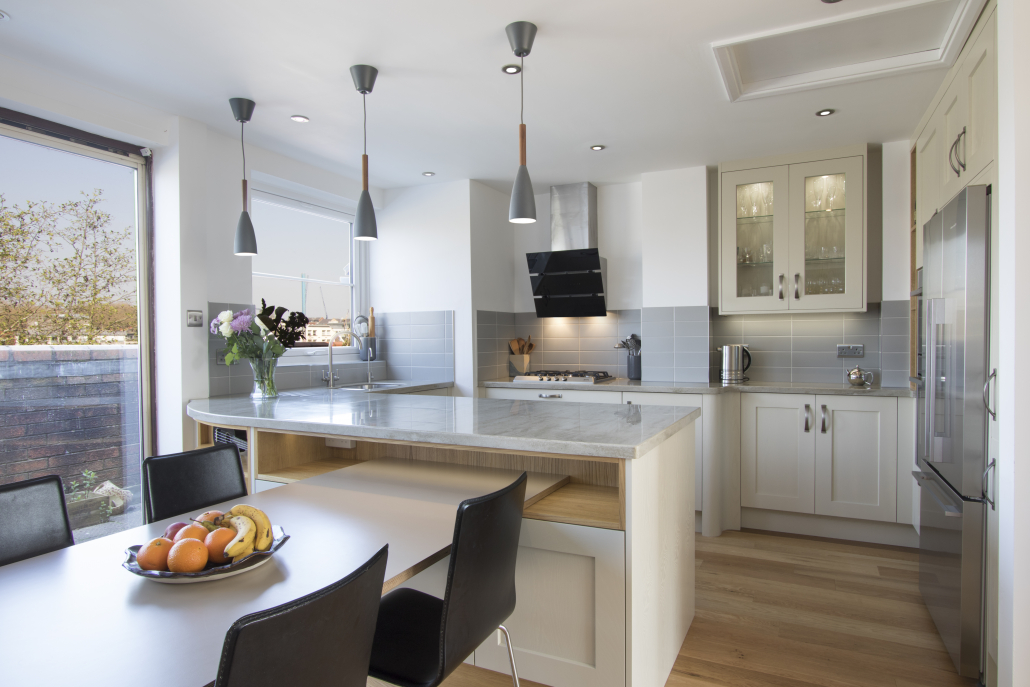
Make it Cosy with Darker Hues:
Contrary to popular belief, dark shades can also work wonders in small kitchens by adding a touch of intimacy and cosiness. Colours like dark grey or black create an inviting atmosphere, with tones that transform as natural light shifts throughout the day, adding depth and intrigue to the room.

Try Out a Touch of Green:
For those inclined towards a splash of colour, incorporating green tones into your cabinetry can be a refreshing choice. Light greens, in particular, create a sense of openness and brightness, especially in rooms with limited natural light. These hues possess reflective properties that bounce light around the space, amplifying brightness and creating an inviting ambiance.
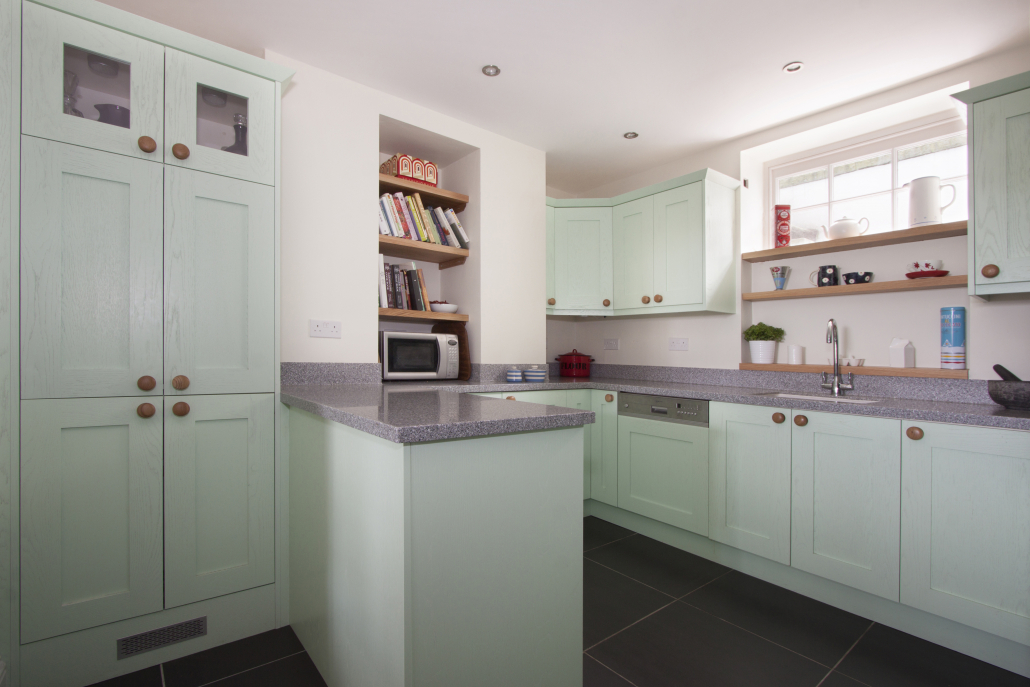
Go Two-Toned:
Unable to decide between two shades? Embrace the best of both worlds with a two-toned kitchen design. Mixing light and dark palettes adds dimension and interest to your space while providing balance and contrast. Whether opting for subtle combinations or bold contrasts, a two-toned kitchen elevates the aesthetic appeal, creating a visually captivating environment.
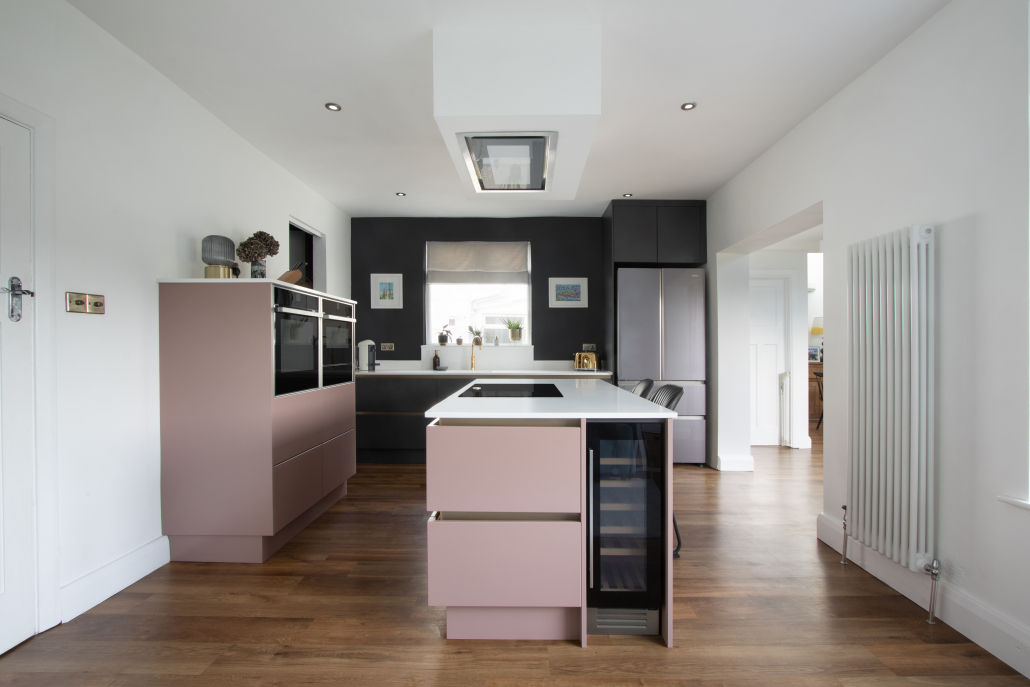
In conclusion, selecting the ideal cabinetry colour for your small kitchen requires careful consideration. By factoring in elements such as natural light, spatial constraints, and personal style preferences, you can narrow down your options and discover the hue that not only enhances the visual appeal of your kitchen but also fosters a welcoming and functional space for cooking and gathering. So, don’t hesitate to experiment with different colours and combinations until you find the one that speaks to you, transforming your kitchen into a haven of style and comfort.
And remember, if you need assistance in crafting your dream kitchen layout, our kitchen planner partner at Number Eighty One is here to help!
Blending Stone and Wood Floors.
/0 Comments/in April News /by Kirstie Ogborne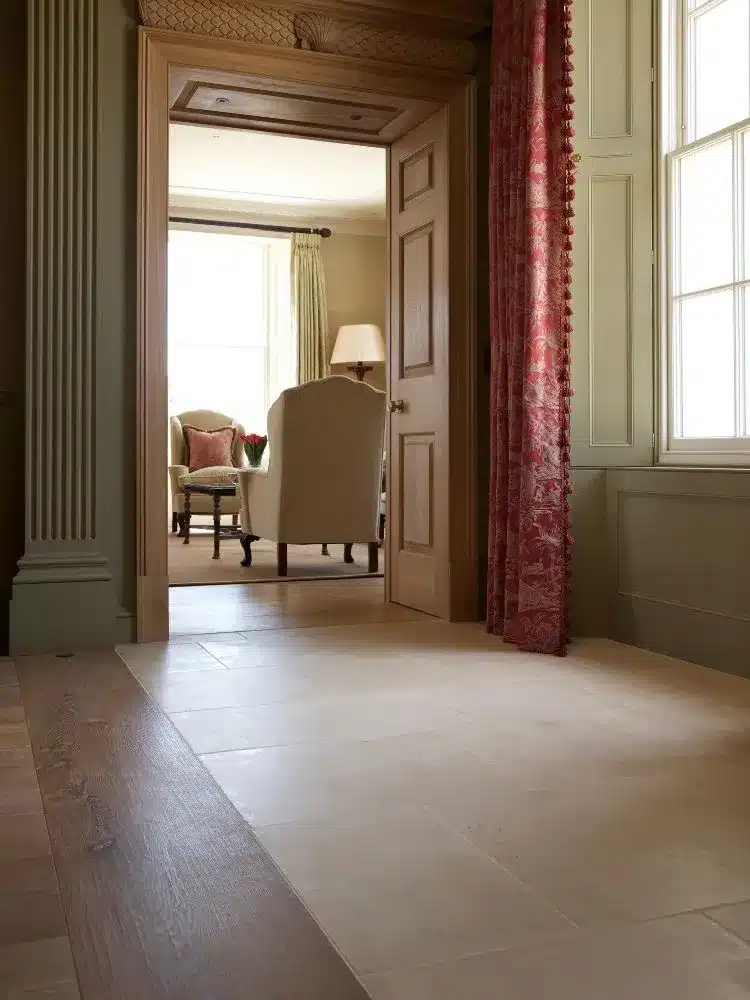
Blending stone and wooden flooring can significantly enhance the aesthetic appeal and functionality of various areas within a home, particularly in high-traffic zones such as hallways, kitchens, and bathrooms, where dining and living spaces intersect. This versatile design approach allows for the seamless integration of different materials, optimising their use according to the specific requirements of each space.
In essence, the concept of blending materials revolves around the idea of mixing and matching various flooring options to achieve both visual harmony and practicality. This means that homeowners have the flexibility to combine stone and wood flooring wherever it best serves their intended purpose.
However, while blending materials can offer numerous benefits, there are certain areas within the home where caution should be exercised, particularly when considering the use of engineered wood flooring. For instance, in areas prone to moisture and humidity, such as bathrooms, engineered wood may not be the most suitable option due to the risk of water stains and steam damage. In such cases, stone flooring emerges as a more resilient and practical choice, offering durability and longevity even in the face of moisture-related challenges.
Similarly, in kitchen environments where frequent food preparation occurs, engineered wood floors may be susceptible to damage from hot oil splashes and spills. In contrast, stone flooring provides greater resistance to such hazards, making it a preferred option for maintaining the integrity and longevity of the floor surface. Moreover, natural stone not only offers superior durability but also adds an element of timeless elegance to the space, enhancing its overall aesthetic appeal.
For homeowners who prioritise practicality and longevity in their flooring choices, the concept of blending materials can serve as a valuable solution. By strategically combining stone and wood flooring, it is possible to create a visually striking impact while ensuring that the selected materials are well-suited to the functional requirements of the space.
Indeed, blending materials opens up a world of intriguing possibilities for homeowners, allowing them to customise their flooring design to suit their unique aesthetic preferences and lifestyle needs. Whether it involves incorporating contrasting textures, colours, or patterns, the art of blending materials offers endless opportunities for creating a distinctive and personalised statement within the home environment.
In conclusion, blending stone and wooden flooring represents a versatile and practical approach to interior design, particularly in areas such as hallways, kitchens, and bathrooms. By carefully considering the functional requirements of each space and selecting appropriate materials accordingly, homeowners can achieve a harmonious balance between aesthetics and functionality. Whether it’s the durability of natural stone or the warmth of wooden flooring, blending materials offers a dynamic and creative solution for enhancing the beauty and livability of any home.
“Elegant Easter Table: Sophisticated Spring Styling”
/0 Comments/in April News /by Kirstie OgborneAs Easter joyously approaches, the envisioning of the perfect Easter table becomes a delightful pursuit.
JUBY INTERIOR DESIGN
Wotton-Under-Edge
Gloucestershire
[email protected]
07918 179372
 UK Business Directory
UK Business Directory

